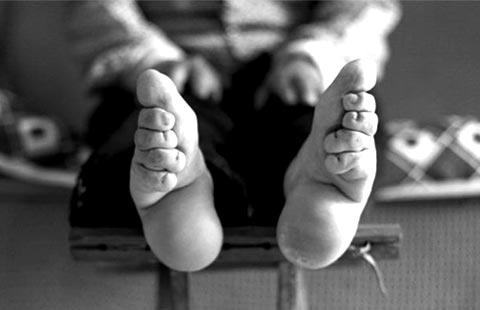Brazil's own martial art is catching on
Updated: 2014-07-07 04:26
By Wang Zhenghua in Shanghai (China Daily Latin America)
|
||||||||
 |
|
Students, both Chinese and expatriates in Shanghai, follow their instructor to play capoeira in a beginner class at Capoeira Mandinga Shanghai, the first group to teach the art in China. See story on page 2. [Gao Erqiang / CHINA DAILY] |
A band of performers indelibly etched the excitement and color of the Brazilian art form capoeira into the minds of viewers around the world at the opening ceremony of the FIFA World Cup.
Capoeira originated among the slave communities on the east coast of Brazil, its popularity exploding internationally over the past 25 years, even gaining dedicated fans in Shanghai.
Its charm is distinct from other popular arts such as karate or yoga, according to Diego Pappalardo, who began teaching capoeira in Shanghai in 2005. It is not only a great physical activity, he says, but also involves music and culture.
"When learning capoeira songs, students also learn the language (Portuguese) and history, with many aspects of the Brazilian culture," said Pappalardo, chief instructor of Capoeira Mandinga Shanghai, the first group to teach the art in China.
"Capoeiristas play capoeira, but do not fight," he said. "There is an interaction between the students which creates a special link and relationship."
As such, capoeira is a good choice for people who get bored in the gym but still want to get fit while having fun and making new friends.
"It is not for lazy people though," said Pappalardo, who is a native of Italy. "It is for people ready to train hard and sweat and who want to be able to move their body better."
Pappalardo said capoeira has many health benefits, from overall flexibility to overall strength, from coordination to cardio, and from fat burning to stress release.
The main benefits of capoeira include helping improve one's balance, coordination, strength, flexibility, rhythm and timing, and respect and consideration of others, he said.
"All of these skills can be incorporated into everyday life for the development and improvement of oneself," he added.
Capoeira is also a great sport for children because it combines martial arts, gymnastics, music and dance and provides a fun and challenging workout.
A reporter visiting a beginner class at Capoeira Mandinga Shanghai found more than 20 students, both Chinese and expatriates ranging in age from 18 to 40-something following their instructor.
As the music began, they stretched and learned the basic movements together. Then they broke into smaller groups and helped each other improve.
Once a week the group learns a Brazilian song before warm-up and then they practice a ritual dance with sticks, train, then finish with a roda, or circle dance, he said.
"There can always be something different, sometimes we practice songs during a regular class, and the combinations of movements are infinite," Pappalardo said.
Daniel Allegri, a 28-year-old American who has been performing capoeira for two years, said: "It's fun because it's different from going to a gym. I can lose weight and become more flexible while enjoying a martial art."
Claire Yan, 26, from China, says that it has been a happy experience learning the art with people from all over the world. "We sing together, and learn how to play the instruments and language. It's a good way to make new friends," she said.
wangzhenghua@chinadaily.com.cn
|
 |
|
An instructor demonstrates one of the high-stepping moves of Brazil’s martial art known as capoeira. [Gao Erqiang / CHINA DAILY] |

 Brazil launches China desk to handle economic ties with China
Brazil launches China desk to handle economic ties with China
 NY Wheel reels in Chinese EB-5 investors
NY Wheel reels in Chinese EB-5 investors
 The Penguins of Madagascar to enter China
The Penguins of Madagascar to enter China
 Panda cub Bao Bao turns one
Panda cub Bao Bao turns one
 HK kid's symphony returns to NY
HK kid's symphony returns to NY
 China, US reach agreement
China, US reach agreement
 40 bodies from jet returned to Dutch soil
40 bodies from jet returned to Dutch soil
 Dance troupe's fusion performance wins over judges
Dance troupe's fusion performance wins over judges
Most Viewed
Editor's Picks

|

|

|

|

|

|
Today's Top News
Manufacturing hits an 18-month high
Transformers producers hit with breach of contract suit
US chipmaker to be deemed monopoly
Chinese still seek Beckel termination
One dead in shooting in Philadelphia
France: Air Algerie plane 'probably' crashed
TransAsia crash while landing in Taiwan
China, UC-Davis set up food safety center
US Weekly

|

|






